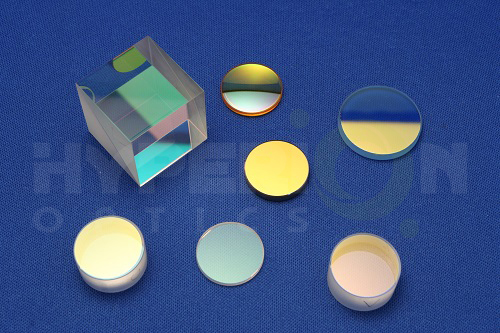Coupling lens and collimator lens are often distinguished in the lens index book through the application scenarios of the lens. What do each of them mean?
Coupling lens is used in the convergent optical path to converge the divergent light of the laser into the receiving fiber;
Collimator lens, also called collimation lens, is used in the collimating light path to convert the divergent light of the laser or fiber into a near-parallel beam with a small divergence angle.
The difference between them lies in the distance from the light source to the focus of the object:
For a collimator lens, the light source is near the focus of the object, and the vertical magnification of the spot is tens to hundreds of times. For the convergent lens, the light source is far away from the focus of the object, and the vertical magnification of the spot is only a few times.
Next we will discuss a problem. Can coupling lenses be used for collimation? Or can the collimator lens be used for convergent light coupling? In practice, there is no need to consider this issue, because the lens supplier provides a rich library of lenses with similar prices, and there is no driving force for "one lens, two usages". The answer to this question should be considered in terms of numerical aperture and aberration.
(1) Numerical aperture
When the same lens is used as a collimation lens, its effective numerical aperture is obviously larger than when used as a convergent lens. Therefore, when a collimator lens is used as a convergent lens, it faces the risk of insufficient numerical aperture. Otherwise, there is no such problem.
(2) Aberrations
Coupling lens or collimation lens are targeted to optimize the surface shape according to their own applications. Under the working distance and aperture recommended by the lens supplier, the wave aberration can reach within 0.05λ, and the coupling loss caused by such a small aberration can be ignored. If the coupling lens and the collimation lens are used interchangeably, the aberration may be larger than in the index book. As for how much larger, this should be determined according to the specific surface shape and working distance. The increase in aberration will directly cause a decrease in coupling efficiency.
In summary, the replacement of the coupling lens and the collimator lens will cause changes in the numerical aperture and deterioration of aberrations, which will cause the decline of coupling efficiency. The fluctuation range of this drop may be as little as a few tenths of a dB, and as much as 2~3dB. In the optical path with large power margin, the efficiency loss is within the acceptable range, so it can be used instead. However, do not use them alternatively in situations where the power margin is insufficient, especially in passive optical devices.

 Call us on:
Call us on:  Email us:
Email us:  R&D Center: 9B-4F 401,No.1 Qingnian Road Liando U Valley,Yuhua International Wisdom Valley, Nanjing, 210039 China
R&D Center: 9B-4F 401,No.1 Qingnian Road Liando U Valley,Yuhua International Wisdom Valley, Nanjing, 210039 China









 English
English  cn
cn  de
de  es
es  fr
fr 


